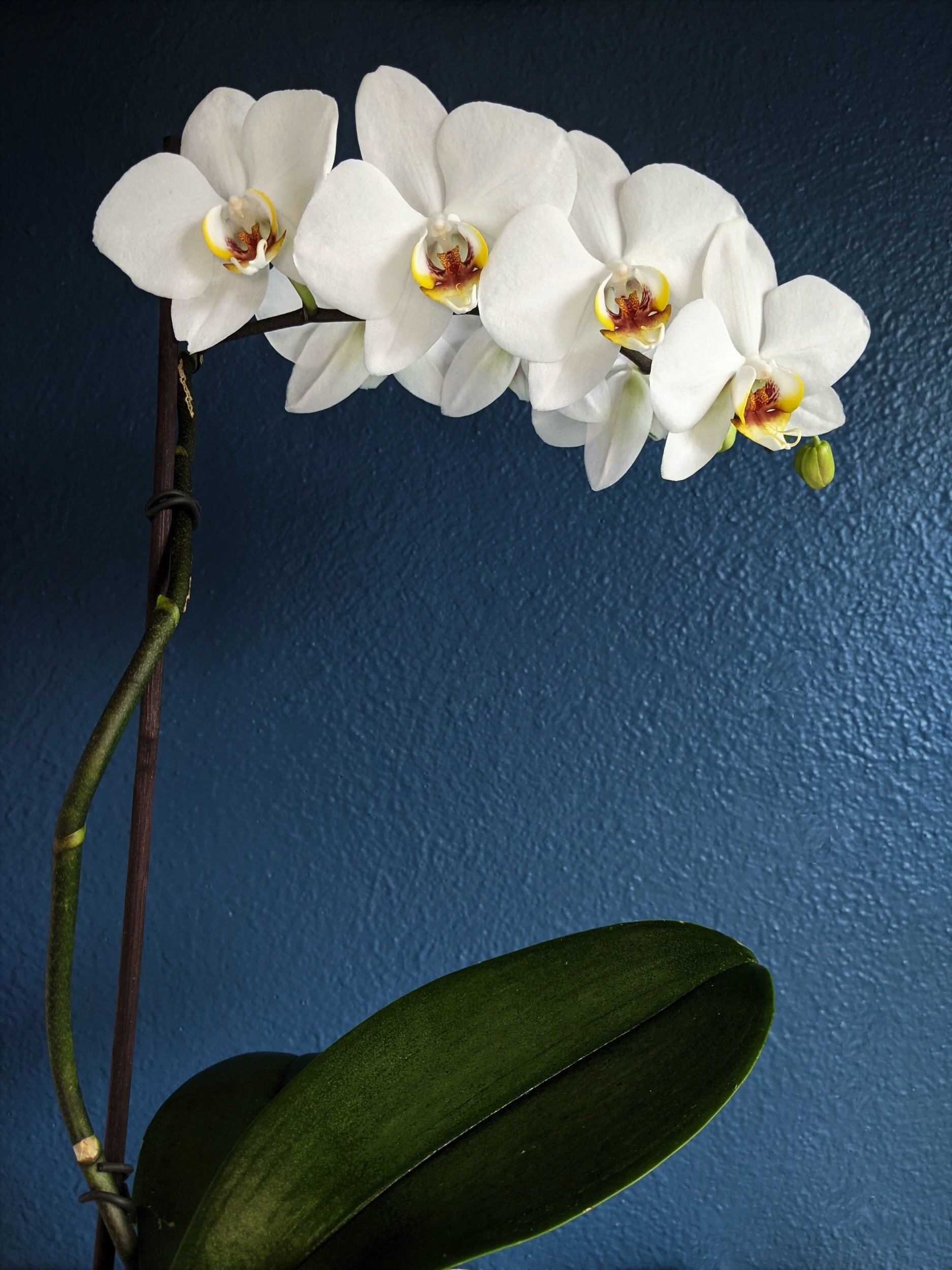Superyacht Stewardess Top Tips for Orchid Care
Orchids are an incredibly popular flower to have onboard super yachts, and in particular the phalaenopsis orchid. In fact, phalaenopsis are the most popular flowering potted plants in the world! They are elegantly beautiful; their flowers last for weeks, and they are (relatively) easy to take care of. This is especially helpful to super yacht stewardesses as we have so much to think about and do on a daily basis, so we need beautiful plants and flowers that do not take up too much time for their care. They however do require some attention and care to ensure they last as long as possible. So here are our top tips to orchid care onboard yachts:
1. Purchasing Orchids
Orchids will generally bloom for 6 – 8 weeks. When purchasing your orchid plants, make sure you get ones that still have buds on their stems. These buds will then gradually all open, giving your plant a longer flowering time and more time for your guests to enjoy them onboard. Check that you have healthy, green leaves and that the leaves are not yellow or brown. Check the roots and make sure they look healthy – it is common for them to extend outside the pot too.
2. Potting Your Orchid
Your orchid will probably arrive in a plastic pot and will be growing in fir bark. Do not be tempted to repot your orchid – this will cause it to lose it’s blooms. Rather, keep your orchid in this pot and then place this into your ornamental pot for display around the yacht. You can disguise the plastic pot with more fir bark, decorative moss or pebbles.
3. Watering Your Orchid
Orchids do not like “wet feet”. Do not over water your orchids as the roots will rot and die and don’t let your orchids sit in pots with water at the bottom. Ensure your orchids are in a well-drained pot so water does not sit at the bottom of the pot. Water your orchids once a week and ensure the roots are wet but not soaking. Do not water the leaves or the blooms and do not let water sit in the well between the leaves and the stem. This will cause them to rot and die. The best place to water your plant is in the sink. Take the orchid out of your decorative pots and stand them in the sink in the plastic pots which have lots of holes at the bottom for drainage. Use lukewarm water and water your plant for about 15 seconds ensuring the bark is thoroughly wet. Allow the plant to drain for about 15 minutes before placing it back into the decorative pot. It may appear dry but it has had enough water. When you have guests onboard and cannot water your orchids in the sink, use a watering can with a long thin spout to water just the roots and remember, don’t use too much water as you don’t want the excess water pooling at the bottom of your pot.
There are some people who recommend using ice blocks to ensure the orchids are not over watered. There has been much discussion about this with some for and some against. Personally, we feel a tropical plant should not have ice placed on it, but if you do opt for this method, use three ice blocks, and place them over the roots only. Do not allow the ice to touch the stem or the leaves.
4. Feeding Your Orchid
When choosing a fertilizer for your orchid look for a 20-20-20 sign and a fertilizer which is for blooming orchids. These numbers mean it is a balanced fertilizer and they represent the percentages of macronutrients – nitrogen, phosphorous, and potassium.
The mantra most repeated when fertilising orchids is weekly, weakly.Do not over fertilize your orchids, rather use less than what is recommended.
5. Placement of Your Orchid
Orchids like warm, humid areas. Once they are blooming, they do not like to be moved too much so pick a spot and leave them as much as possible. Do not place your orchids in direct sunlight as this will burn them and do not place them in draughty places, especially near aircon vents with cold air blowing on them.
Fun Facts About Orchids
· Phalaenopsis are native to tropical regions of South-East Asia
· Phalaenopsis can live to over 100 years
· It takes 6 – 9 months for phalaenopsis to rebloom
· They don’t need soil to grow – they are epiphytes, which means they attach their roots to other plants rather than growing in soil
For more top tips or to learn more about being a Super Stew why don’t you have a look at our IAMI GUEST (read internationally accredited) courses available online and face to face. www.trilogyluxtraining.co.za

